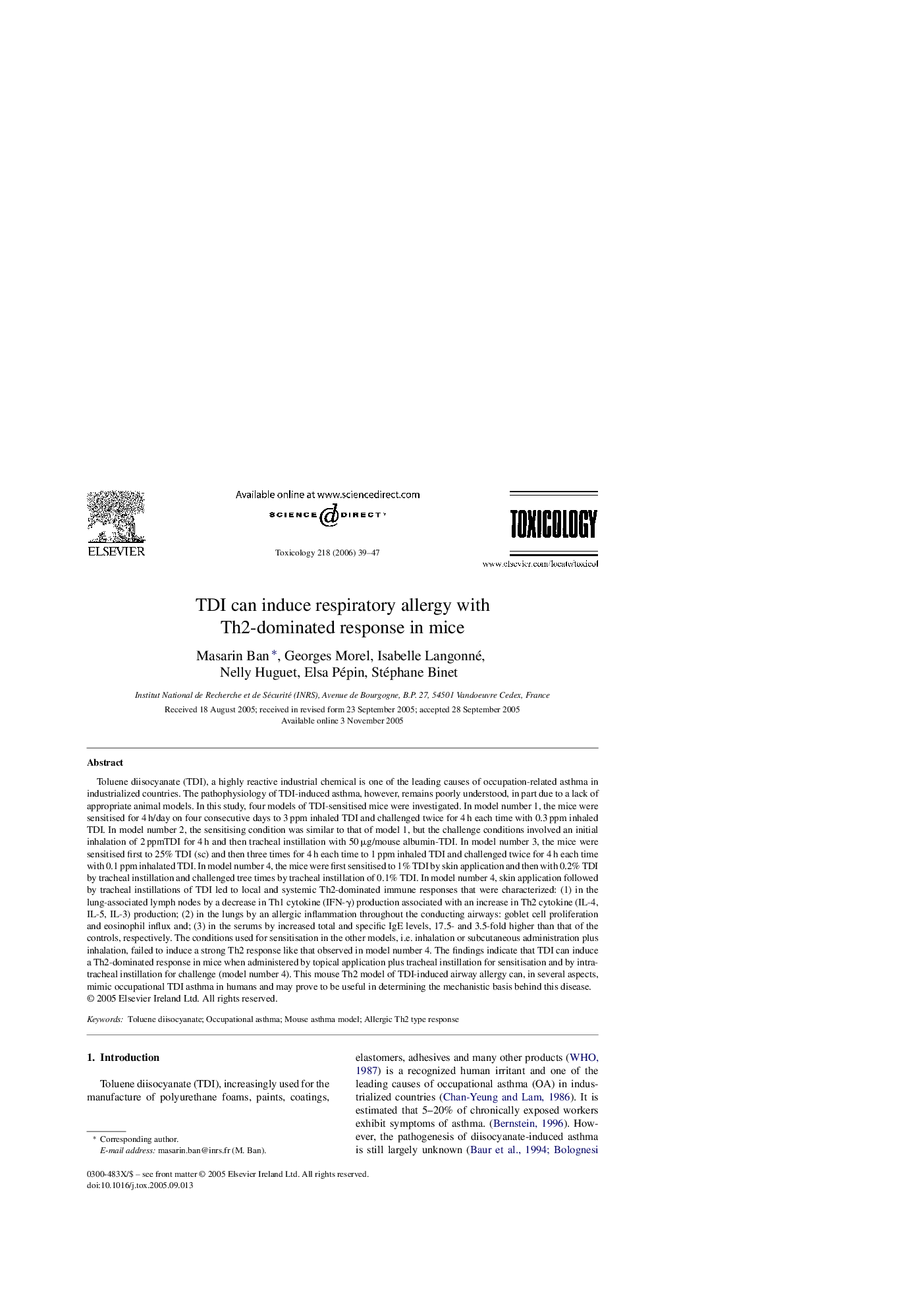| Article ID | Journal | Published Year | Pages | File Type |
|---|---|---|---|---|
| 2598322 | Toxicology | 2006 | 9 Pages |
Toluene diisocyanate (TDI), a highly reactive industrial chemical is one of the leading causes of occupation-related asthma in industrialized countries. The pathophysiology of TDI-induced asthma, however, remains poorly understood, in part due to a lack of appropriate animal models. In this study, four models of TDI-sensitised mice were investigated. In model number 1, the mice were sensitised for 4 h/day on four consecutive days to 3 ppm inhaled TDI and challenged twice for 4 h each time with 0.3 ppm inhaled TDI. In model number 2, the sensitising condition was similar to that of model 1, but the challenge conditions involved an initial inhalation of 2 ppmTDI for 4 h and then tracheal instillation with 50 μg/mouse albumin-TDI. In model number 3, the mice were sensitised first to 25% TDI (sc) and then three times for 4 h each time to 1 ppm inhaled TDI and challenged twice for 4 h each time with 0.1 ppm inhalated TDI. In model number 4, the mice were first sensitised to 1% TDI by skin application and then with 0.2% TDI by tracheal instillation and challenged tree times by tracheal instillation of 0.1% TDI. In model number 4, skin application followed by tracheal instillations of TDI led to local and systemic Th2-dominated immune responses that were characterized: (1) in the lung-associated lymph nodes by a decrease in Th1 cytokine (IFN-γ) production associated with an increase in Th2 cytokine (IL-4, IL-5, IL-3) production; (2) in the lungs by an allergic inflammation throughout the conducting airways: goblet cell proliferation and eosinophil influx and; (3) in the serums by increased total and specific IgE levels, 17.5- and 3.5-fold higher than that of the controls, respectively. The conditions used for sensitisation in the other models, i.e. inhalation or subcutaneous administration plus inhalation, failed to induce a strong Th2 response like that observed in model number 4. The findings indicate that TDI can induce a Th2-dominated response in mice when administered by topical application plus tracheal instillation for sensitisation and by intra-tracheal instillation for challenge (model number 4). This mouse Th2 model of TDI-induced airway allergy can, in several aspects, mimic occupational TDI asthma in humans and may prove to be useful in determining the mechanistic basis behind this disease.
